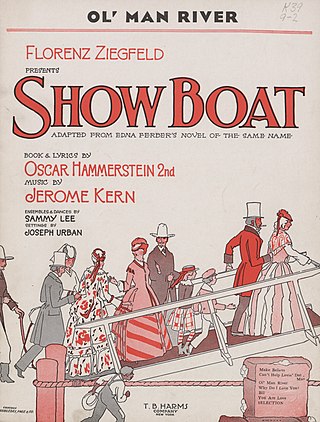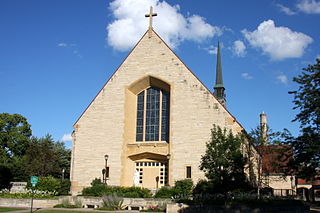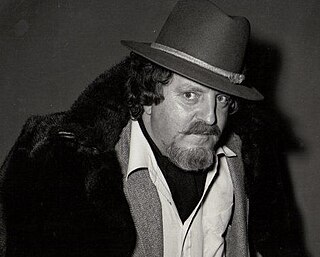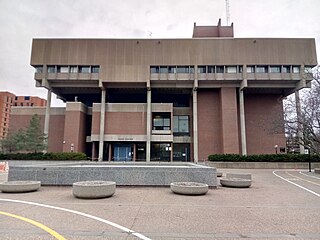History
In 1956, the Minnesota Centennial Commission began to plan for the 1958 state centennial celebration. Frank Whiting, director of the University of Minnesota's theater program, saw an opportunity to realize his dream of a showboat theater on the Mississippi River. He proposed a Minnesota Centennial Showboat. The commission agreed, and the search began for a suitable boat. [2]
Finding a paddleboat wasn't easy, and building one on an existing barge proved too costly. In 1957, Whiting and the Centennial Commission's Tom Swain learned that the U.S. Army Corps of Engineers planned to retire the General John Newton, a 175-foot (53 m) sternwheeler towboat built in 1899. Minnesota Senator Edward J. Thye helped to arrange its transfer to the university for the symbolic fee of one dollar. [2]
The paddleboat arrived in Saint Paul on April 3, 1958. The university had less than three months to prepare it for the season opening on June 26. Students helped to recreate the atmosphere of an 1890s showboat by painting walls, sewing curtains, reupholstering old theater seats, building scenery, and sewing costumes. [2]
The first season opened with a production of Augustin Daly's 1867 melodrama Under the Gaslight . Miss Minnesota Diane Albers, assisted by Doc Whiting and Centennial Commission Chairman Peter Popovich, christened the boat by breaking a bottle of champagne across the bow. James S. Lombard of the commission's arts committee cut the ribbon to open the gangplank. Mayor Joseph E. Dillon of Saint Paul rang the ship's original bell to invite the theater's first patrons aboard. [2]
In its early years, the showboat traveled up and down the river. It stopped for scheduled performances in Minneapolis, Saint Paul, Stillwater, Hastings, Red Wing, Wabasha, and Winona. The student cast, numbering about fifteen, performed one or two plays each season. Each show featured vaudeville-style olios (lively song-and-dance numbers) between acts. In addition to performing, the actors cleaned the boat, greeted visitors, and took tickets, among other tasks. [2]
1969 marked the last season the boat toured. Following that season, it made an appearance in the Swedish film The Emigrants before settling into a stationary mooring site on the river's east bank, below Coffman Memorial Union. [2] [3]
In 1995, the ninety-six-year-old paddleboat moved to Saint Paul for $2 million in needed repairs. However sparks from a welder ignited a fire that destroyed the boat on the evening of January 27, 2000, just months before its scheduled reopening. Only the paddlewheel and burned-out hull remained. [2] [3]
University theater professor C. Lance Brockman led a campaign to obtain a new showboat. In December 2000, the university agreed to a partnership with the City of Saint Paul, the Saint Paul Riverfront Development Corporation, and the Padelford Packet Boat Company to build a new showboat. Construction began the following spring in Greenville, Mississippi. [2]
Christened the Frank M. Whiting, the new Minnesota Centennial Showboat arrived at Harriet Island on April 17, 2002. It opened on July 4 with a production of Dr. Jekyll and Mr. Hyde . [2]
The Minnesota Centennial Showboat exposed students to a unique type of theater. Student actors embraced the over-the-top style of melodrama. Designers and student crews met the challenges presented by a small performance space. Audiences joined the fun by booing and hissing at the villain and applauding the hero. [2]
The showboat program earned the Tourism Partner of the Year Award from the Saint Paul Convention and Visitors Bureau in 2004. The Padelford Packet Boat Company joined the university's Department of Theatre Arts & Dance to create the C. Lance Brockman Showboat Scholarship later that year. [2]
The final curtain came down on the Minnesota Centennial Showboat at the end of the 2016 summer season. The university's fifteen-year agreement with the City of Saint Paul expired, and the university cut the program for budget reasons. The final season featured a revival of Under the Gaslight. [2]
In 2018, a nonprofit raised money to buy the boat and move it to Winona, Minnesota. [4]
The university sold the boat to the City of Saint Paul for one dollar. The showboat was being renovated in St. Paul when it caught fire and burned down. [5]















